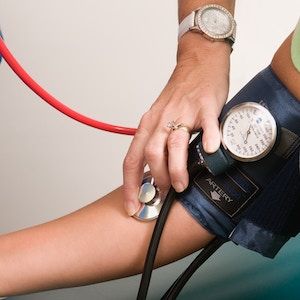News
Article
High Blood Pressure in Adolescence Increases Cardiovascular Event Risk, Study Finds
Author(s):
An analysis of more than 1 million men found higher blood pressure in late adolescence was associated with an increased risk for major cardiovascular events in later life.
Credit: CDC/Unsplash

Elevated blood pressure in late adolescence was associated with a substantial and gradual absolute risk for major cardiovascular events in adulthood, beginning at a blood pressure level of 120/80 mmHg, according to new research.1
With up to 50 years of follow-up in a cohort of more than 1 million men, the analysis suggests 1 in 10 adolescents with stage 2 systolic-diastolic hypertension would suffer a major cardiovascular event before retirement age, while those with blood pressure below elevated levels would not undergo such an event.
“The results of this study highlight the possibility of identifying persons with increased cardiovascular risk in late adolescence, enabling early intervention to prevent CVD,” wrote the investigative team, led by Helene Rietz, MD, Norrlands Universitetssjukhus. “This possibility should encourage practitioners to measure blood pressure in adolescents, which is often not done today.”
The association between blood pressure level and cardiovascular outcomes has been extensively researched in middle-aged and older adults, but not for children and adolescents. Most of what is known about the risk associated with different blood pressure levels is primarily based on limited, indirect evidence, while the prevalence of hypertension has increased over time in young people.2
In this study, Rietz and colleagues investigated the association between blood pressure categories in late adolescence and the risk for major cardiovascular events in adulthood, according to American College of Cardiology/American Heart Association guidelines. Males in late adolescence conscripted into the Swedish military between September 1969 and December 1997 with valid blood pressure measurements were included in the analysis.1
The primary study endpoint was a composite of CVD events, including hospitalization due to myocardial infarction, heart failure, ischemic stroke, intracerebral hemorrhage, and CVD-related death. Variables included in the composite outcome were analyzed separately, with the addition of all-cause mortality, for the secondary endpoint.
Overall, the study included 1,366,519 participants, with a mean age of 18.3 years. Approximately 30% (n = 393,196) of participants were identified as having elevated blood pressure (120 to 129/<80 mmHg) and 54% (n = 734,382) as having hypertension (≥130/80 mmHg).
A total of 79,644 first CVD events occurred during a median follow-up of 35.9 years. The analysis showed the cumulative risk for cardiovascular events in the composite outcome increased gradually across all blood pressure stages:
- 14.7% for normal blood pressure
- 15.7% for elevated blood pressure
- 16.6% for stage 1 isolated systolic hypertension (ISH)
- 17.4% for stage 1 isolated diastolic hypertension (IDH)
- 19.0% for stage 1 systolic-diastolic hypertension (SDH)
- 18.6% for stage 2 ISH
- 21.2% for stage 2 IDH
- 24.3% for stage 2 SDH
After multivariable adjustment, investigators noted the associations remained mostly unchanged. The adjusted hazard ratio was 1.10 (95% CI, 1.07 - 1.13) for elevated blood pressure, 1.15 (95% CI, 1.11 - 1.18) for stage 1 ISH, 1.23 (95% CI, 1.18 - 1.28) for stage 1 IDH, 1.32 (95% CI, 1.27 - 1.37) for stage 1 SDH, 1.31 (95% CI, 1.28 - 1.35) for stage 2 ISH, 1.55 (95% CI, 1.42 - 1.69) for stage 2 IDH, and 1.71 (95% CI, 1.58 - 1.84) for stage 2 SHD.
With the addition of these findings to prior evidence, investigators suggest elevated blood pressure and hypertension in adolescence increase the risk for cardiovascular events in adulthood. As a result, early detection and treatment of hypertension may allow for greater risk reduction of future events.
“Elevated BP should not be disregarded due to low 5- or 10-year cardiovascular risk; rather, our findings suggest clinically important differences in CVD outcomes beginning around age 50 years, warranting close monitoring and possibly treatment,” investigators wrote.
References
- Blood Pressure Level in Late Adolescence and Risk for Cardiovascular Events [published online ahead of print, 2023 Sep 26]. Ann Intern Med. 2023;10.7326/P23-0007. doi:10.7326/P23-0007
- ACPinternists. High blood pressure in males in late adolescence associated with increased risk of major cardiovascular events later in life. EurekAlert! September 25, 2023. Accessed September 26, 2023. https://www.eurekalert.org/news-releases/1002025.





